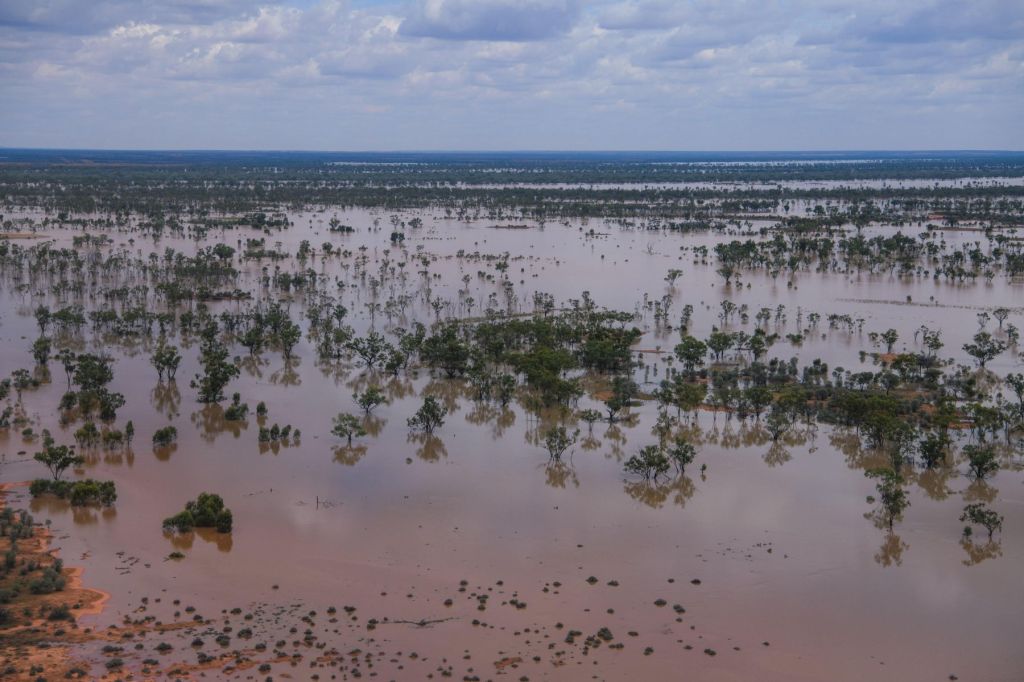‘Like losing your job’: animals perish in cruel floods
Flooding twice the size of Victoria has inundated Queensland’s inland regions, with more rain to come.

Devastating livestock losses have been predicted for a sodden state that has been hit by widespread flooding with more rain set to come.
The full extent of livestock losses from widespread flooding in a sodden state won’t be known until water levels finally ease.
But an expert has warned the natural disaster will have a lasting impact on the industry, with more than 100,000 cattle, sheep and goats already lost.
Helicopter pilots have been kept busy delivering feed and rescuing animals when they are not evacuating inundated communities in western Queensland.
Flooding twice the size of Victoria has inundated the state’s inland regions, with more rain to come.
It is considered the worst flooding event in more than 50 years, triggering fears of widespread livestock losses.
You might like
“There’s been some submissions put in and they’re already over 100,000 losses,” AgForce sheep, wool and goat president Boyd Webb told AAP on Wednesday.
“This is going to have a lasting effect on those businesses for a long period of time.”
Mr Webb said for some graziers the losses would equate to “losing your job”.
“It’ll be like you’ve been unemployed for 12 months for some people, or longer,” he said.
“For different individuals, it will be very, very tough, in what was already a tough landscape.”
Stay informed, daily
The remnants of ex-tropical cyclone Dianne brought widespread rainfall across three states by Wednesday morning including flood-hit areas.
Up to 50mm was recorded from northwest to southern Queensland and down to NSW after migrating from the Northern Territory.
Rain is finally set to clear but major flood warnings remain throughout inland Queensland, with water levels not expected to ease for days in some areas.
The army is on standby as local helicopter pilots do their best to fly supplies and livestock fodder throughout the impacted region.
“They’re like bees but they’re doing a great job and we thank them for all the work they’re doing,” Nationals Leader David Littleproud told ABC Radio on Wednesday.
Helicopter pilots have helped with evacuations across the region with entire towns rescued, including Adavale in the southwest.
Word quickly got out across Channel Country that help was needed, prompting a timely response from local pilots.
“Locals found out we were being flooded and came to the rescue,” Adavale resident Kirstin Finger told AAP.
A local in a tinnie helped pick up neighbours as the entire population of Adavale – about 30 people – was evacuated.
“He was going around doing swift water rescues, taking people over to one of the nearby hills so they could be taken out by helicopter,” Ms Finger said.
Adavale residents were relocated to nearby Quilpie, where they have spent the past few days.
Water levels have begun to recede at Adavale, providing hope a return is imminent.
“We are looking at a pretty big clean-up,” Ms Finger’s husband Ray said.
A GoFundMe fundraiser has been organised to help Adavale’s recovery, with more than $6000 already raised.
Further south, another entire community has fled their homes due to rising floodwaters.
Thargomindah’s population of more than 200 people has been moved to higher ground after floodwaters breached a levee, eclipsing 1974 record levels by reaching 7.5m.
Locals have been warned water levels could rise again with the remnants of ex-tropical cyclone Dianne bringing more rain.
The heaviest falls are set to hit southern Queensland and northern NSW on Wednesday, with totals exceeding 100mm in some areas.




